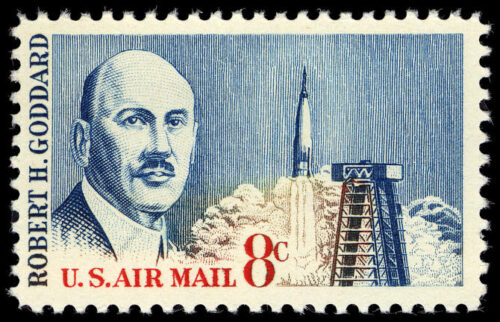
October 5 marks the birthday of Robert Hutchings Goddard, known as the “Father of Modern Rocketry.”

It started in a cherry tree
In October 1899, a 17-year-old Goddard climbed a cherry tree in Central Massachusetts armed with a saw and a hatchet so he could cut off some dead tree limbs.
“It was one of the quiet, colorful afternoons of sheer beauty which we have in October in New England,” Goddard later wrote, “And as I looked towards the fields at the east, I imagined how wonderful it would be to make some device which had even the possibility of ascending to Mars.”
People thought he was crazy, but he pressed on with his ideas and received his first two rocket-related patents in 1914.
That was just the beginning.
Here’s NASA’s list of just some of Goddard’s later contributions to missilery and space flight
- Explored the practicality of using rocket propulsion to reach high altitudes, even the moon (1912)
- Proved that a rocket will work in a vacuum, that it needs no air to push against
- Developed and fired a liquid fuel rocket (March 16, 1926, Auburn, Mass.)
- Shot a scientific payload in a rocket flight (1929, Auburn, Mass.)
- Used vanes in the rocket motor blast for guidance (1932, New Mexico)
- Developed gyro control apparatus for rocket flight (1932, New Mexico)
- Received U.S. patent for of multi-stage rocket (1914)
- Developed pumps suitable for rocket fuels
- Launched a rocket with a motor pivoted on gimbals under the influence of a gyro mechanism (1937)

Long after he died, Goddard did get to the moon. Sort of.
When Buzz Aldrin went to the Moon on Apollo 11 in 1969, he took along two tiny, credit card sized copies of Goddard’s autobiography.
These were the first books flown to the moon and one copy now resides in a vault at Clark University in Worcester, Massachusetts.
Goddard was born in Worcester; was both a student and an instructor at Clark University; and is buried in Worcester.

In 1966, a time capsule with a great deal of Goddard memorabilia, including eight of Goddard’s patents and letters between Goddard and science-fiction writer H.G. Wells, was placed in the concrete floor of the Goddard Library at Clark University to be opened in 2466.
The time capsule also contains a long list of “Space Age” material, including packets of space food from NASA (tuna fish, bacon strips, banana pudding, coconut squares, beef sandwiches, cereal cubes and chicken bites) and “Items Representing Contemporary Life” from 1966, including tranquilizer pills, a miniskirt, a Beatles Record, a package of filter-tip cigarettes and copy of Playboy.